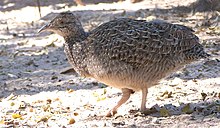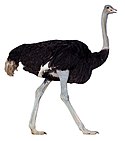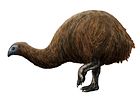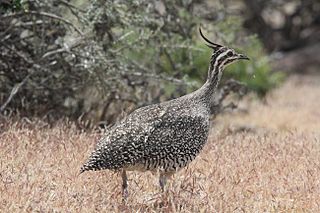
Tinamous form an order of birds called Tinamiformes, comprising a single family called Tinamidae, divided into two distinct subfamilies, containing 46 species found in Mexico, Central America, and South America. The word "tinamou" comes from the Galibi term for these birds, tinamu. Tinamous have traditionally been regarded as the sister group of the flightless ratites, but recent work places them well within the ratite radiation, implying basal ratites could fly. Tinamous first appear in the fossil record in the Miocene epoch. They are generally sedentary, ground-dwelling and, though not flightless, when possible avoid flight in favour of hiding or running away from danger. They are found in a variety of habitats, ranging from semi-arid alpine grasslands to tropical rainforests. The two subfamilies are broadly divided by habitat, with the Nothurinae referred to as steppe or open country tinamous, and the Tinaminae known as forest tinamous.
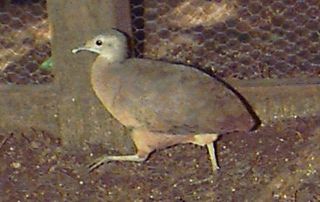
The little tinamou is a species of tinamou. It is found in Central and South America, as well as on the Caribbean island of Trinidad.
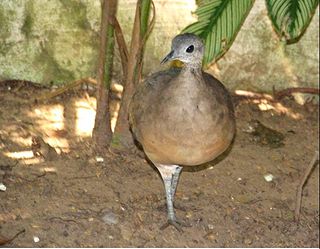
The white-throated tinamou is a species of bird native to the Amazon rainforest of Brazil, northern Bolivia, southeastern Colombia, northeastern Ecuador, eastern Peru and southern Venezuela.

The brown tinamou is a brownish ground bird found in humid lowland and montane forest in tropical and subtropical South America.

The Andean tinamou is a tinamou, found commonly in high-altitude shrubland, in the Andes of South America.

The puna tinamou also known as Pentland's tinamou, is a member of the most ancient groups of bird families, the tinamous. This species is native to southern South America. The binomial name of the species commemorates the Irish natural scientist Joseph Barclay Pentland (1797–1873) by Nicholas Aylward Vigors in 1837. The IUCN list this species as Least Concern, with an occurrence range of 590,000 km2 (230,000 sq mi).
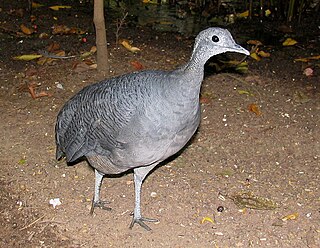
The grey tinamou is a type of ground bird native to South America. Four subspecies are recognised.

Crypturellus is a genus of tinamous containing mostly forest species. However, there are the odd few that are grassland or steppe tinamous. The genus contains 21 species.

The highland tinamou or Bonaparte's tinamou is a type of ground bird found in montane moist forest typically over 1,500 m (4,900 ft) altitude.

The Tataupa tinamou is a type of tinamou commonly found in dry forest in subtropical and tropical regions in southeastern South America.

Taczanowski's tinamou is a type of ground bird found in the eastern Andes in Peru in the Junín, Cuzco, Apurímac, Ayacucho, and Puno Regions.
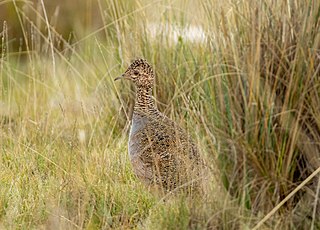
The ornate tinamou is a type of tinamou commonly found in the high altitude grassland and dry shrubland in subtropical and tropical regions of west central South America.

The Chilean tinamou is a type of tinamou commonly found in high elevation shrubland in subtropical regions of central Chile.

The brushland tinamou is a type of tinamou commonly found in high-altitude dry shrubland in subtropical and tropical regions of southern South America.

The curve-billed tinamou is a type of tinamou commonly found in high-altitude grassland and shrubland habitats in the Andes of South America.

Tinamus is a genus of birds in the tinamou family Tinamidae. This genus comprises some of the larger members of this South American family.

Nothocercus is a genus of birds in the tinamou family. This genus comprises three species of this South American family.

Nothura is a genus of birds in the tinamou family. This genus comprises five members of this South American family.
